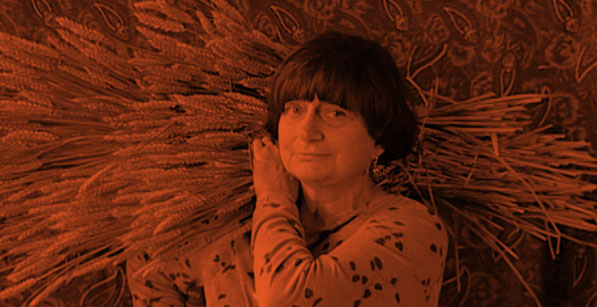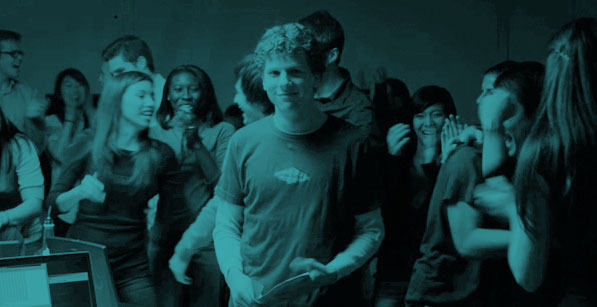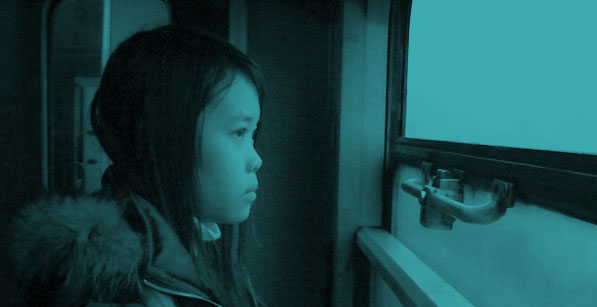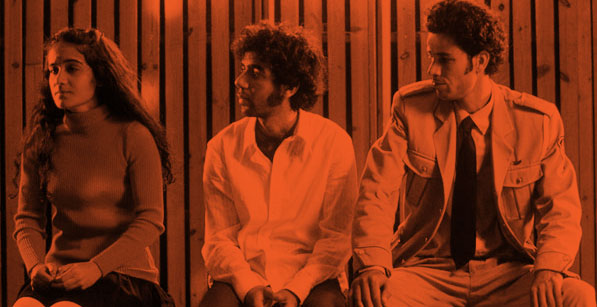Editor’s note: It’s been two Labor Days since we first published this piece, but as you can see, the films remain essential.
Is manual labor dying? For that matter, is the job as we know it on its way out the door? What does it feel like to work fifteen-hour days sewing jeans in Guangzhou for large-waisted Westerners—and then get laid off by recession? Exactly who were those guys who blew up the world economy in 2008? Did Mark Zuckerberg really invent Facebook because he didn’t get the girl? Why do we love procedurals? What the hell is “women’s work?”
Can a Parisian rat aspire to be a gourmet chef? And last but by no means least, can I please have that striped power suit Rosalind Russell wore to get the story and reel in Cary Grant in His Girl Friday?
Among the twenty-five films I’ve chosen to honor Labor Day, you won’t find Man With a Movie Camera, or Modern Times, or even anything by that fly-on-the-wall of the working world, Fred Wiseman. Not because they don’t belong, but because this isn’t a top twenty-five list. It’s a blend of the canonical, the catholic, and the idiosyncratic—a personal best culled from movies that speak to the pressing concerns of our age. Some chart the great changes that have rolled over our working world—global corporatism, marvelous innovation, alienation, unemployment, class inequality and conflict, environmental ruin. Others parse their meanings of these shifts or draw beauty from ugliness or rage against the machine. Still, others dwell on work undertaken for the love of labor or fellow human beings.
So let’s begin with movies that pay homage to the workers for whom Labor Day was dreamed up—by a union man, of course—way back in the 1890s.
I. Manual Labor
Workingman’s Death (2005)
Graphic and gorgeous without resort to romantic nostalgia, the late Austrian filmmaker Michael Glawogger’s expressionist essay—part of a trilogy about workers around the globe that includes Megacities and Whores’ Glory—honors the unsung worlds of coal mining in Ukraine, hauling sulfur in Indonesia, a Nigerian slaughterhouse, dismantling old tankers for scrap in Pakistan, Chinese workers clinging to the steel industry in decline. So goes the 21st-century global workforce—vulnerable to galloping obsolescence, frighteningly unprotected by-laws or unions, yet astonishingly cheerful, resilient, and mutually supportive. Their work habitats have a terrible, apocalyptic beauty that morphs into great art, and not just for Glawogger: an epilogue shows retired smelting works, all gussied up into a British artist’s installation. Should we be pleased or sorry?
Leviathan (2012)
In a similar vein, Leviathan is a dizzyingly unstructured portrait of deep-sea fishing off the New England coast by Lucien Castaing-Taylor (who also made the terrific Sweetgrass) and Verena Paravel. Twelve cameras were passed between fishermen and filmmakers aboard a boat in choppy nocturnal seas, immersing the viewer in the deglamorized endurance test that is deep-sea labor. The film is dedicated to the “countless” boats lost at sea in Moby Dick country, and this film, wordless except for the men’s grunted communiqués, makes you see why.
The Gleaners and I (2000)
Rich in charm and whimsy, Agnes Varda’s The Gleaners and I take a digressive ramble around scavenging past and present, her own cinematic method included. This delightful, compassionate film spans the history of gleaning from its origins in wartime women picking corn after harvest to the present age of surplus, which has spawned its own scavengers, among them downwardly mobile dumpster divers and at least one thrifty gourmet chef. To say nothing of the intrepid Varda in her eighties, filming with one hand while foraging for heart-shaped potatoes with the other. Long may she rummage.
II. Monster Moguls
‘The Social Network’
Citizen Kane (1941)
Well, of course. Orson Welles pioneered the tortured rise and fall of the workaholic American CEO, cutting and thrusting his unhappy way to wealth and power over the bodies of friend and foe, wives and mistresses—and all for want of motherly love. To this day some of our finest filmmakers and performers continue to probe the Rosebuds that drove the ruthless captains of American industry—notably Paul Thomas Anderson with There Will Be Blood (with Daniel Day-Lewis as oil baron, albeit channeling not Welles but John Huston) and The Master (with Philip Seymour Hoffman as the cult leader who, like many a shyster, worked so hard at not working at all). And so to today’s empire builders….
The Social Network (2010)
Even if the trigger was the terrific Rooney Mara, romantic rejection seems a flimsy (and almost certainly factually inaccurate) motivator for a Harvard whippersnapper’s meteoric rise to fame as the king of 21st-century social media. That aside, David Fincher’s elegant, hugely entertaining account (from the fast-talking pen of Aaron Sorkin) of Mark Zuckerberg’s creation of Facebook, foreshadows a business sector run by immature nerds with oodles of tech smarts, and absolutely no idea how to behave around people.
III. Procedurals
(Note: Procedurals are often professional success stories: Me, I like the ones that poke around in the cracks of official methodology, where life goes on.)
Army of Shadows (1969)
Jean-Pierre Melville’s masterful World War II noir is on one level a story of the failure of the procedure to resist the Vichy government. Lino Ventura is brilliantly impassive as a French resistance fighter trying to rebuild his internally compromised cell. The group’s day-to-day work is full of botched jobs, cowardice and courage, temporary victories snatched from the jaws of certain defeat, and the unspeakable task of killing two of their own.
Once Upon a Time in Anatolia (2011)
At 140 minutes, Nuri Bilge Ceylan’s inchoate crime drama about the search for a dead body in provincial Turkey may be the most languorous policier ever made. Its existential musings filter through endless, sometimes comical red tape and investigative processes. Narrators are unreliable; official evidence lies more often than not. It’s the digressions that signify, turning this beautifully photographed film into a queasy fairy tale that—if you can stand the snail’s pace and loose ends—excites the mind and the heart.
Tinker, Tailor, Soldier, Spy (2011)
Tomas Alfredson’s Tinker, Tailor, Soldier, Spy didn’t exactly light up the box office either. Never mind: the Swedish filmmaker got to make exactly the kind of slow-burning thriller he wanted to out of John le Carre’s nonpareil source material, and never mind Alec Guinness in the superb but different mini-series. Among the movie’s many pleasures is the director’s palpable enchantment with the pre-historic tech—rumpled agents in phone booths, clacking encryption machines, hunting rifles—of 1970s pre-Internet espionage and elimination. All the lumbering tech and secretive practice add up to a world so cut off from anything that might be called ordinary life, it becomes frighteningly enslaved to a self-defeating process.
Stop Making Sense (1984)
Like all the best concert movies, Jonathan Demme’s Stop Making Sense created a space where people who out of frame might be ready to kill each other come together onstage in an intensely focused temporary community—stagehands included—to make something they love together.
Shoah (1985)
At nine grueling hours, Claude Lanzmann’s Holocaust documentary Shoah was never destined to reach a mass audience. But the French filmmaker’s monumental achievement was to document, without recourse to photos of piled-up emaciated bodies, the mad methodology of the Final Solution through the testimony of perpetrators, collaborators, and survivors. The result is almost unwatchable, yet utterly essential to our understanding of the Nazi machine.
IV. Women at Work
His Girl Friday (1940)
Jeanne Dielman: 23 Quai du Commerce, 1080 Bruxelles (1975)
A double bill of Howard Hawks and Belgian avant-garde filmmaker Chantal Akerman might seriously mess with your head. Yet there’s a weird logic to such a pairing. In radically different ways, His Girl Friday and Jeanne Dielman: 23 Quai du Commerce, 1080 Bruxelles represent the heaven and hell of 20th-century women’s work, and it’s less strange than it might be that heaven came first. How canny of Ben Hecht to turn Hildy Johnson (played like a man in his stage play The Front Page and later by Jack Lemmon in the movie) into a woman right when the primary movie audience was female and women were drafted, all too briefly, into the workplace. Rosalind Russell, in great threads, tries to persuade herself that she’s done with reporting and with her testy ex-husband (Cary Grant). It goes without saying that she leans in, and the rest is all delicious banter, sexy friction, and the excitement of getting the story, from which Hildy can’t look up long enough to watch her anodyne new fiancé slither away.
Jeanne Dielman, by contrast, drains the glamour from actress Delphine Seyrig in a three-hour-plus study, in something like real-time, of one Belgian homemaker’s domestic drudgery, obsessively repeated in order to avoid the anxiety and depression of her empty days. In its way, Akerman’s film is arguably one of our finest—if least seen—existential thrillers.
The Phantom of the Operator (2004)
Women’s alienation wasn’t confined to the home, as Caroline Martel’s The Phantom of the Operator shows in her alternately dismaying and impish montage of American female telephone operators. Clipped from corporate public relations reels dating back to 1903, Martel’s sly montage shows the “telephone gals” being Taylorized to death in the workplace and, unprotected by unions, patronized with a lot of guff about the communication skills of the “feminine personality.” In time they were replaced by software: Ernestine, we hardly knew you.
Barbara (2012)
A cosmopolitan East Berlin physician (the great Nina Hoss) is downsized to the country doctor as punishment for trying to defect to the West in Christian Petzold’s ongoing inquiry into East German life before the Wall fell. She’s not done trying to escape but, caught between provincialism and paranoia, finds rough salvation in her unglamorous work routines. A quasi-maternal sacrifice allows her to fight the system, preserve her integrity and maybe find love in the process.
V. Globalization from the Inside Out
The World (2004)
Jia Zhangke’s narrative feature The World looks at a massive Beijing theme park through the eyes of the young people who staff the replicas of the world’s top tourist cities they have little hope of ever visiting themselves. Here they perform lavish floor shows while trying to manage their own loneliness, confusion, and alienation far from home, in spartan quarters assigned by exploitative employers.
Last Train Home (2010)
Home to over 130 million migrant workers, China has become the go-to location for stories of urban dislocation. Lixin Fan’s painful documentary Last Train Home tags along with one couple, who labor seven days a week under sweatshop conditions sewing denim jeans for Westerners, as they journey home for the annual four-day weekend to visit the angry and bereft children for whom they gave up their productive years.
Manufactured Landscapes (2006)
Jennifer Baichwal’s documentary Manufactured Landscapes opens with a staggering eight-minute tracking shot by environmental photographer Edward Burtynsky of a gargantuan Chinese factory where identically dressed workers put in unregulated long days assembling tiny machines units. By way of mountainous electronics dumps and the Three Gorges Dam, which has displaced millions of poor Chinese, Burtynsky documents the rape of nature by industries catering to the gaping maw of Western consumption.
Inside Job (2010)
All this low-paid Chinese and other global labor is shoring up the huge profits made by outsourcing one-percenters on both sides of the Pacific. You can meet some of this unsavory crew in Charles Ferguson’s Inside Job: the industry insider gained mischievous access to all manner of big cheeses who helped build the bubble that burst into a global recession. Laden with zippy graphics, this doc is both entertaining and an enraged indictment of the heedless avarice of a few that led to the immiseration of millions. The pin-striped private jet that helped sink Iceland says it all.
VI. The Laurent Cantet Trilogy
‘Human Resources’
Human Resources (1999)
Time Out (2001)
The Class (2008)
No disrespect to the brothers Dardenne or to the many British filmmakers—Ken Loach, Mike Leigh, Andrea Arnold, Lynne Ramsay, Clio Barnard—who have kept faith with working-class culture through its steady erosion. But when it comes to taking stock of arguably the biggest story of our time—the economic and emotional costs of creeping corporatism and the decline of the manufacturing sector that has sustained laboring classes throughout the developed world—French director Laurent Cantet is in a class by himself with his tripartite portrait of displaced workers shot through with an indictment of the forces that threaten to destroy their lives. In Human Resources, a college graduate returns to the manufacturing company where his father has been a union activist forever. Trying to mediate between workers and savagely predatory management bent on crippling layoffs, the well-intentioned young man finds himself stranded between the two camps. The misplaced loyalty of an old man continuing to show up for work after he’s been laid off is no less devastating than the confusion, in Cantet’s fact-based masterpiece Time Out, of a fired executive wandering around the countryside while pretending to his family that he still works at the job he hated and cajoling colleagues into a disastrous global investment scheme. In The Class, Cantet examines the creative strategies of a gifted teacher trying to redefine pedagogy for a roomful of skittish students who come from all over the world. If The Class is about the powder keg of race in the multicultural metropolis, it is also a tribute to a man who still loves his work. This brings me to…
VII. Labors of Love
‘The Band’s Visit’
It’s A Wonderful Life (1946)
First, the dark side. I’m not the first person to find it odd that Frank Capra’s not-so-subliminally bleak portrait of small-town America during the Depression gets served up as annual Christmas uplift on television. Yes, Jimmy Stewart’s George Bailey gives up his dreams of college and world travel for Donna Reed. But he never wanted the job he inherited from Dad, even if it means defending the little man against Big Capital. He wanted to travel and go to college.
Blue is the Warmest Color (2013)
Critics who carped about the protracted “porn” scenes in Abdellatif Kechiche’s film seem not to have noticed that every human activity in this movie plays out in minute detail—not least the lovely scenes of Adele giving her all to teaching pre-schoolers, even when her private life has just imploded and her ex-lover the artist thinks she’s wasting her time.
The Band’s Visit (2007)
Middle East conflict gets a rare, warmly conciliatory spin in Israeli director Eran Kolirin’s Tati-esque comedy about a visiting Egyptian mini-orchestra that lands by mistake in a one-horse Israeli development town. Cross-cultural misunderstandings pile up, only to be overcome by lovely, funny grace notes in which musical concourse, conversation, and a little spontaneous sex create their own rueful lingua franca of kindness, longing, and loss.
Ratatouille (2007)
Remy the rat personifies the passion for work as a vocation and the virtues of pursuing excellence. Brad Bird’s exuberant comedy redefines democracy as the creation of opportunities for a meritocracy of talent. Like his equally wonderful The Incredibles, the movie redefines labor as elevated play minus mediocrity, plus hard work and fun. As American Dreams go, “anyone can cook” is not too shabby. And who wouldn’t want Remy firing up their Labor Day barbie?
Ella Taylor teaches in the School of Cinema at the University of Southern California and contributes film reviews and features at NPR.org, Variety, and other publications. In a former life, she was a sociologist.











